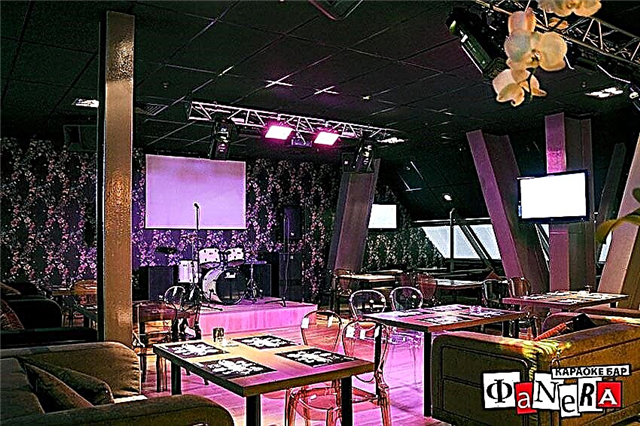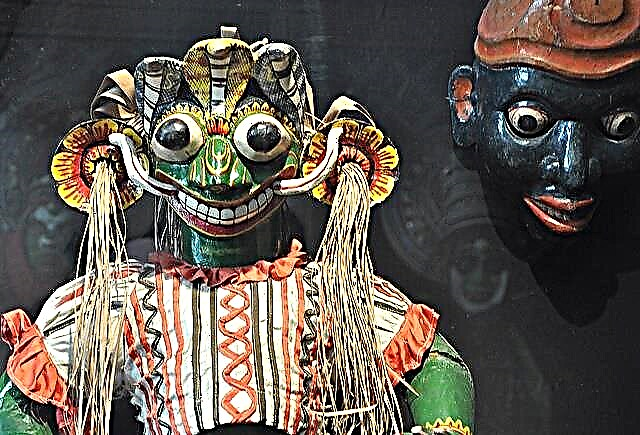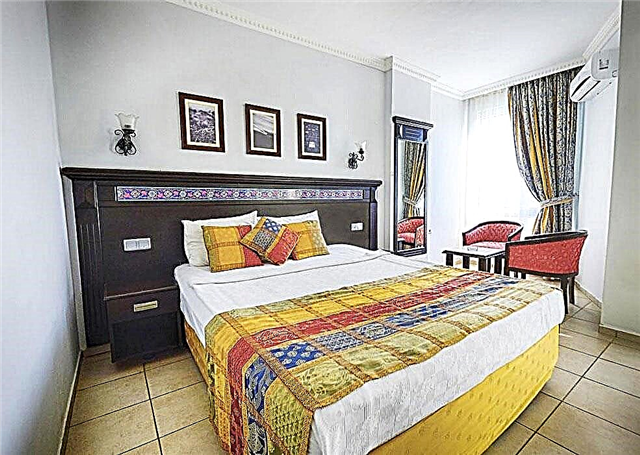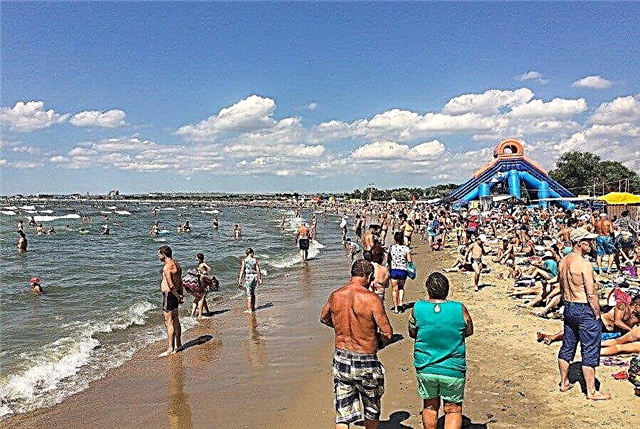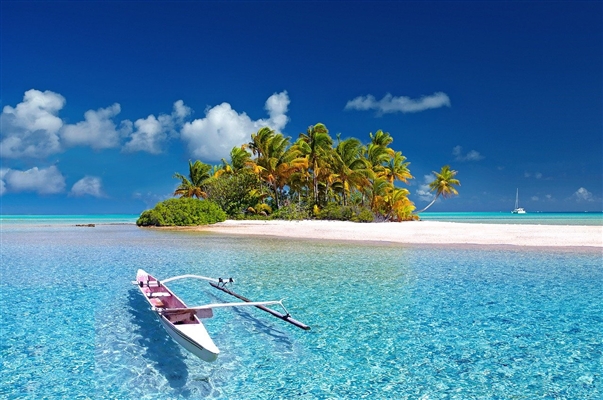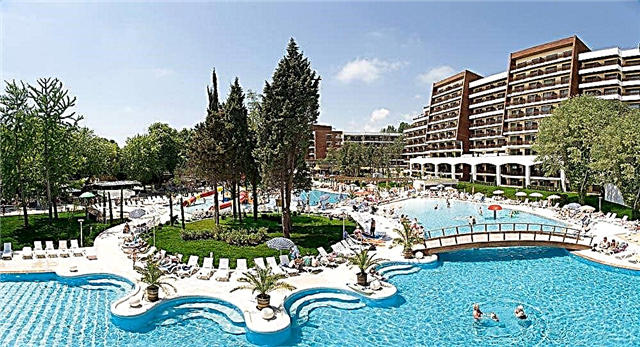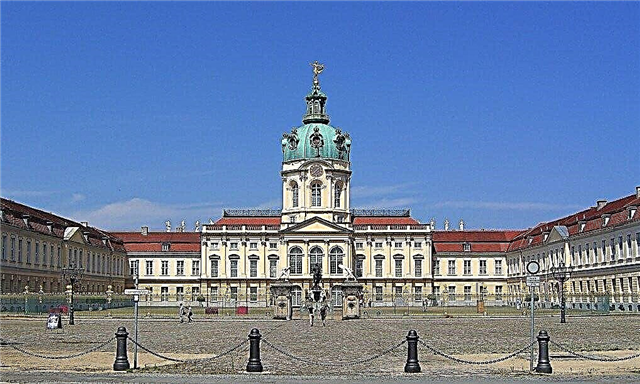Germany's rich history is reflected in the many surviving monuments of the past. German palaces that served a wide variety of functions are a popular tourist destination. They are not only architectural masterpieces, but also a repository of many artifacts, values, unique decoration in general.
Most of these complexes or individual buildings are included in sightseeing tours. However, they can be viewed in private. Some palaces are less popular, so adventure lovers get to know them on their own or in the company of a hired guide. The appearance of the former residences of the holders of power and the nobility is closely monitored, so that almost all of them have been restored and are ready to receive guests.
The most beautiful palaces in Germany
Würzburg residence
The building dates back to the 18th century. The main value and visiting card of the palace is a fresco by Giovanni Battista Tiepolo. It is located on the arch of one of the largest staircases in Europe. Thanks to new technologies, the image is illuminated for tourists. Part of the building was destroyed during the Second World War. It took years to restore, but now the old damage is invisible.

Charlottenburg
The largest palace in Berlin was built at the end of the 17th century. It received its name in honor of the wife of the then monarch, who conceived the construction. Initially, Charlottenburg was used as the summer residence of the kings. There is a huge park behind the main building. At the moment, the palace has several expositions: a porcelain museum, a pavilion with objects of art, the bedroom of King Frederick the Great, and others.

Schleissheim
The palace and park complex was founded in 1590. Originally there was a manor on this site, but later it was rebuilt into a residence of the corresponding style and size. The buildings and the surrounding area were damaged during the Second World War and were completely restored. The palace has become not only an architectural landmark, but also an art gallery. Here you can see the works of masters of the Baroque era.

Sanssouci
Built in the 40s of the 18th century. Located in Potsdam on a vine hill. The original decoration has been preserved inside. Also serves as a painting gallery. There are separate interesting objects on the territory of the complex: a tea house, a grotto of Neptune, a temple, a house with dragons, a belvedere and so on. Sanssouci is one of the first palaces in Germany to receive museum status. Protected by UNESCO.

Augustusburg
Built on the site of a fortress in the middle of the 16th century on the Schellenberg mountain. The location determined the original function of the palace; it was a hunting residence. It has had the status of a museum for almost a hundred years. On the territory there are: Europe's largest collection of motorcycles and an exhibition of carriages, rare guns and trophies, a stylized antique museum of torture, as well as a pavilion with a mineral spring.

New Palace in Stuttgart
Construction was carried out from the middle to the end of the 18th century. The last baroque palace in Germany. The building looks modest, its only decoration is sculptures installed on the railing around the roof. The building went through restoration after the events of the Second World War. Currently, the New Palace serves as a kind of office space: local ministries are located here, and government meetings are also held.

Karlsruhe
The year of foundation is 1715. For the city of the same name, in every sense it is the heart: both from a historical point of view and from a geographical point of view. The palace is located in the center, and streets diverge from it in different directions. There is a local history museum inside. In addition, the Constitutional Court is partially located here. Its main building is located nearby in the Karlsruhe palace park, which has become a place of recreation for residents and tourists.

Ludwigsburg residence
Construction took place over thirty years at the beginning of the 18th century. The city of the same name was founded at about the same time. The palace is surrounded by a vast park. There are several museums here: cars, ceramics, theater, and so on. Depending on the season or on memorable dates, expositions change. The interior decoration of the residence has been preserved in its original form. Almost all the halls are open to the public.

Bellevue
Located in Berlin. The foundation was laid in 1784. Since the completion of the construction to the present day, Bellevue has gone through several restorations and rebuildings. Used as a residence. Now it belongs to the presidential cabinet. On the one hand, it has a lot of green spaces, on the other, a small embankment, as well as an ideal lawn in the spacious courtyard and in front of the façade.

Benrath
Construction ended in the second half of the 18th century. The palace is located in Dusseldorf on the banks of the Rhine. The French were responsible for the project and built it according to the fashion trends of that time in their country. The wings are attached to the main building. Near Benrath there are: a garden, a greenhouse, a museum of park art. The palace itself also has enough expositions that complement the rich interior decoration.

Zwinger
Start of construction - 1709. In the same century, three parts of the palace and park complex were completed, and the last one only in the 19th century. A landscaped garden is laid out in the center. The courtyard is more modest than the surrounding beauty. In the Zwinger itself there are the most important museums of Dresden: physics and mathematics, mineralogy and geology, porcelain, sculpture and an art gallery.

Nordkirchen Palace
Built from 1703 to 1734. Because of its rich external and internal decoration, not typical of German palaces, it was named "Versailles of Westphalia". The main complex is built according to strict geometry, divided into interconnected buildings and surrounded by artificial reservoirs. This includes a garden with all sorts of decorative elements from the pattern of the fence to ancient sculptures.

New Palace in Potsdam
Built in the middle of the 18th century in the late Baroque style. Located in the Sanssouci Park. A golden eagle is installed on the central dome. Now the palace is used as a building for the University of the Arts. On the second floor of the southern wing, a theater from the time of its construction is perfectly preserved. It periodically hosts performances, both by graduates for their theses and by touring troupes.

Nymphenburg
Construction began in 1664. The final appearance of the palace complex was formed only two hundred years later. On the territory and inside of Nymphenburg there are: "gallery of beauties", a porcelain museum, a museum of carriages, a museum "Man and Nature". Some rooms are open for inspection, which have preserved luxury items and decorations from the times of the kings. The rest of the rooms are closed for restoration ongoing since the Second World War.
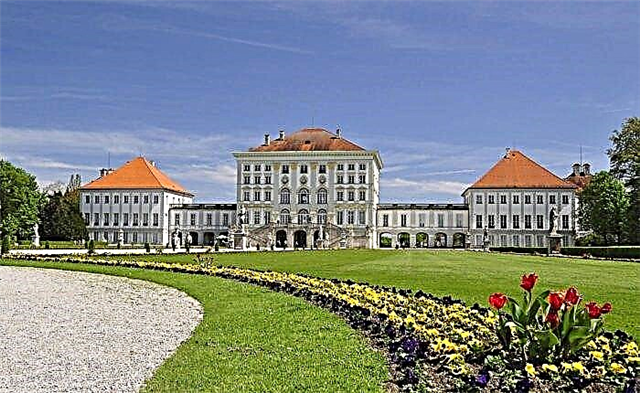
Herrenchiemsee
Founded in 1878. It is also called "Bavarian Versailles". The complex with a palace and a garden is surrounded by dense forest on all sides. For his time he was incredibly progressive: he had running water, sewerage, heating and even an elevator. Inside Herrenchiemsee, you can get acquainted not only with the decoration, paintings, furniture and other prints of the era, but also visit the museum of Ludwig II.

Oranienbaum (Saxony-Anhalt)
Built in 1693. A hundred years later, a Chinese-style garden was laid out around the palace. Since fruit trees, including oranges, were grown here, the palace got its current name. The appearance of a nearby pagoda complemented the landscape. Now the southern wing is reserved for the museum of garden art, although it does not fully occupy it. The area is accessible for walking and sightseeing.
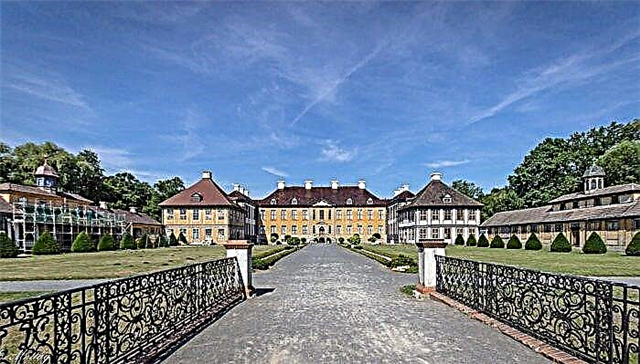
Pilnitz
Built in the 17th century. Located on the banks of the Elbe, very close to Dresden. There is a garden around the palace as well as a unique greenhouse. The most important plant exhibit is the bicentennial camellia.Due to the abundance of a wide variety of plants in the park, it is best to visit this place in the spring or early summer to appreciate the local beauty. In the palace, not only excursions are available, but also games that brightened up the evenings of the royal family.

Munich residence
Year of construction 1385, but the appearance of the structure has changed over time. The palace is spread over an impressive area. It has ten courtyards. The museums of the Munich residence are impressive both in the value of the exhibits and in their number, for example, the main museum of the complex contains 130 rooms. Among other things, precious stones from the treasury of monarchs, antiques of the 16th century, porcelain from different eras are exhibited here.

Biebrich
The construction time is the beginning and the middle of the 18th century. The building was originally the residence of the noble house of Nassau. Now it is a place for receptions, both private and public. Status presentations and events are held here. The park, located near Bibrikh, on Trinity is filled with equestrian sports enthusiasts, the international tournament opens its doors to spectators and professionals.

Linderhof
It was erected in 1869 at an altitude of thousands of meters above sea level among the Alps. Ludwig II received another secluded residence. The excursion includes a tour of ten halls, of different orientations, with the same style and furnishings. A special attraction of the Linderhof Park is the Venus Grotto. There are many flower beds, flower beds, fountains and sculptures around.
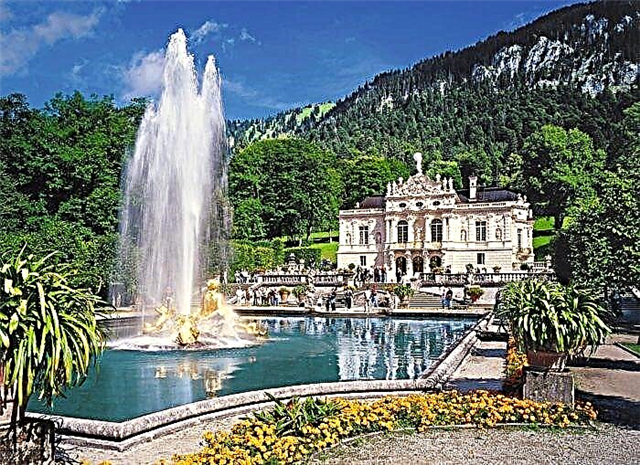
Bensberg
Built in the XVII. The construction is not typical for the Germans in everything. The reason is simple - the author of the project is Italian, and his compatriots also worked on the interior of the palace. Bensberg has been a luxury hotel for twenty years. There is also a three Michelin star restaurant and a spa. The rooms offer scenic views of the park and Cologne Cathedral. Inspection of the nearby territory is open to all tourists.

Hubertusburg
The year of construction is 1721. Fifty years later, a porcelain factory was organized here. In the 19th century, the palace managed to be a state prison. Then, charitable organizations, clinics for the mentally ill, homes for the disabled and so on were based there. Hubertusburg's rich past is reflected in the guided tours that take place around it.
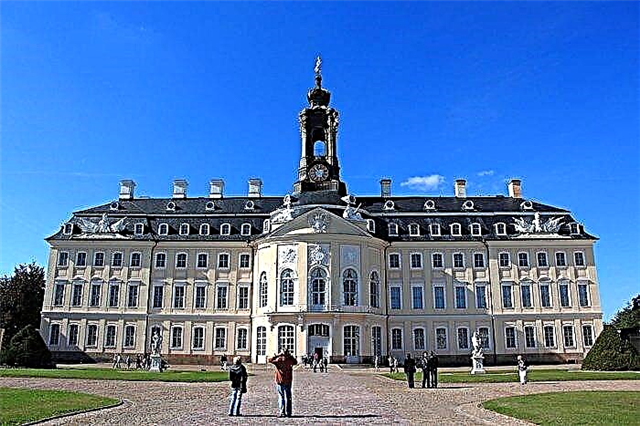
Köpenick
The first hunting lodge was built on the site of the current building in 1558, although its appearance has changed since then. Included in the Prussian heritage fund and protected by the state. Köpenick stands at the confluence of two rivers on the island of the same name. There are many small lakes around. Almost the entire territory of the palace is set aside for museums: from archaeological exhibits to handicrafts by local craftsmen. A big holiday that attracts tourists is “Köpenickské Summer”.

Schönhausen
Built at the turn of the 17th and 18th centuries in Berlin. One of the few palaces not damaged during the Second World War. Surrounded by a park with centuries-old trees. During one of the restorations of the palace, the color of the walls changed. But many rarities have been preserved or have been restored. The ballroom, like nowhere else in the German capital, is decorated in the Rococo style. This room is used for special receptions and chamber concerts.

Schwetzingen palace
It got its current appearance in 1697. Before that, there was a fortress, mentioned in documents back in the XIV century. Along with the living quarters and utility rooms included in a single building, the palace also provided for the presence of a court theater. You can still come here on an excursion. The park is divided into two styles: French and English. There is not only a smoothly mowed lawn and planting, but also attractions.

Poppelsdorf
Built in the 18th century. It was originally listed in the possession of Archbishop Clement Augustus. Then it became part of the University of Bonn. Mostly famous for its picturesque park. Several exhibitions are open on the territory of the palace, but they have no special relation to the complex. There is also a museum of minerals, although it only works a couple of days a week and you need to make an appointment for an excursion in advance.

Bruchsal
The project was conceived at the beginning of 1720. In total, it includes about fifty different buildings, some are interconnected, others are located separately. Such a grandiose structure has gone through devastation and not the easiest years of desolation. Now the restored halls with frescoes, paintings, and all kinds of exhibits are available for visiting. Several museums also work on the territory of Bruchsal.

Rastatt
It was founded in 1697 and took several years to build. The palace has a rich history: it managed to visit not only the residence, but also the courtroom, and also hosted the congress. Nowadays, the southern wing of the Rastatt is reserved for the military history museum, the northern one for the district court and the museum of the democratic movement in Germany. The central part of the building retains the original styles and is available for excursions.

Mannheim palace
It was brought into its current form at the beginning of the 18th century. The main style is baroque, moreover, it is characterized by excessive luxury in details. Since the palace was badly damaged during the war, it had to be seriously restored. Although the historical appearance was restored, changes were made, for example, the courtyards were covered with granite tiles. Now the Mannheim Palace is given over to lecture halls, a museum and a library of the local university.

Münster palace
Built in the 60s-80s of the 18th century. Was the seat of the bishop. It is located near the Cathedral Square of the city. And the square in front of the palace is the second largest in Europe. It hosts holidays, equestrian competitions and regular festivals. There is a park nearby with a botanical garden. Now the building belongs to the Wilhelm University of Westphalia.


